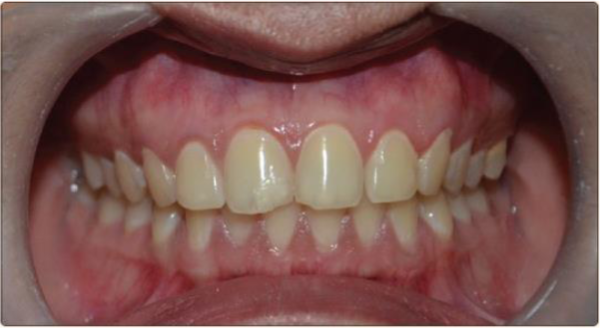The Relation Between High Levels of Hydrocortisone in Saliva and Periodontic Condition in Anxiety
Main Article Content
Abstract
Periodontitis and anxiety are two topics that have gotten much attention in the last two decades. Early discovery of these disorders is critical for successful treatment. Hydrocortisone is a protein that has been discovered to be consistently linked to both.This investigation was intended to compare SCLs of saliva hydrocortisone between CP patients who reported experiencing anxiety and those who did not. In this cross-sectional investigation, saliva samples from 92 individuals were collected and analyzed for hydrocortisone levels using the ELISA technique. Class 1 consisted of participants with no periodontitis and no anxiety, Class 2 included those with periodontitis but no anxiety, Class 3 included those without periodontitis but with anxiety, and Class 4 included those with no periodontitis but high anxiety (with periodontitis and anxiety). A total of 92 adults (41 men and 51 women) participated in the research. The mean SCL for participants in Class 4 (Class 4: 60.13± 6.68) is significantly higher than the mean SCL for participants in Class 1 (15.01 ± 2.62), Class 2 (31.92 ±6.80), Class 3 (34.47 ±13.47), and Class 2. When looking at Class I, we see a negative link between hydrocortisone and BOP, anxiety and PI, and anxiety and hydrocortisone level, whereas Class 4 reveals a positive correlation between SCL and PD that is not statistically significant. The SCL analysis revealed class-specific differences. Both CP and psychological anxiety were linked to SCL. The SCL is amplified by inflammation and stress.
Article Details
References
Ardila, C. M., & Guzmán, I. C. (2016). Association of P orphyromonas gingivalis with high levels of anxiety‐induced hormone hydrocortisone in chronic periodontitis patients. Journal of investigative and clinical dentistry, 7(4), 361-367.
Cakmak, O., Alkan, B. A., Ozsoy, S., Sen, A., & Abdulrezzak, U. (2014). Association of gingival crevicular fluid hydrocortisone/dehydroepiandrosterone levels with periodontic status. Journal of periodontology, 85(8), e287-e294.
Croucher, R., Marcenes, W. S., Torres, M. C. M., Hughes, F., & Sheiham, A. (1997). The relationship between life‐events and periodontitis A case‐control study. Journal of clinical periodontology, 24(1), 39-43.
da Silva, A. M., Newman, H., & Oakley, D. (1995). Psychosocial factors in inflammatory periodontic diseases: a review. Journal of Clinical Periodontology, 22(7), 516-526.
Deinzer, R., Granrath, N., Spahl, M., Linz, S., Waschul, B., & Herforth, A. (2005). Anxiety, oral health behaviour and clinical outcome. British journal of health psychology, 10(2), 269-283.
Freeman, R. (1993). Anxiety measures as predictors of periodontic disease-a preliminary communication. Community Dent Oral Epidemiol, 21, 176-177.
Genco, R., Ho, A., Grossi, S., Dunford, R., & Tedesco, L. (1999). Relationship of anxiety, dianxiety, and inadequate coping behaviors to periodontic disease. Journal of periodontology, 70(7), 711-723.
Genco, R. J. (1996). Current view of risk factors for periodontic diseases. Journal of periodontology, 67, 1041-1049.
Genco, R. J., Ho, A. W., Kopman, J., Grossi, S. G., Dunford, R. G., & Tedesco, L. A. (1998). Models to evaluate the role of anxiety in periodontic disease.
Goyal, S., Jajoo, S., Nagappa, G., & Rao, G. (2011). Estimation of relationship between psychosocial anxiety and periodontic status using serum hydrocortisone level: a clinico-biochemical study. Indian Journal of Dental Research, 22(1), 6.
Hagan, P., Poole, S., & Bristow, A. F. (1992). Immunosuppressive activity of corticotrophin-releasing factor. Inhibition of interleukin-1 and interleukin-6 production by human mononuclear cells. Biochemical Journal, 281(1), 251-254.
Hilgert, J., Hugo, F., Bandeira, D., & Bozzetti, M. (2006). Anxiety, hydrocortisone, and periodontitis in a population aged 50 years and over. Journal of dental research, 85(4), 324-328.
LeResche, L., & Dworkin, S. F. (2002). The role of anxiety in inflammatory disease, including periodontic disease: review of concepts and current findings. Periodontology 2000, 30(1), 91-103.
Linden, G. J., Mullally, B. H., & Freeman, R. (1996). Anxiety and the progression of periodontic disease. Journal of clinical periodontology, 23(7), 675-680.
Lovibond, P. F., & Lovibond, S. H. (1995). The structure of negative emotional states: Comparison of the Depression Anxiety Anxiety Scales (DASS) with the Beck Depression and Anxiety Inventories. Behaviour research and therapy, 33(3), 335-343.
Mannem, S., & Chava, V. K. (2012). The effect of anxiety on periodontitis: A clinicobiochemical study. Journal of Indian Society of Periodontology, 16(3), 365.
Nejtek, V. A. (2002). High and low emotion events influence emotional anxiety perceptions and are associated with salivary hydrocortisone response changes in a consecutive anxiety paradigm. Psychoneuroendocrinology, 27(3), 337-352.
Rai, B., Kaur, J., & Anand, S. (2012). Possible relationship between periodontitis and dementia in a North Indian old age population: a pilot study. Gerodontology, 29(2), e200-e205.
Refulio, Z., Rocafuerte, M., de la Rosa, M., Mendoza, G., & Chambrone, L. (2013). Association among anxiety, salivary hydrocortisone levels, and chronic periodontitis. Journal of periodontic & implant science, 43(2), 96-100.
Rohini, G., Kalaivani, S., Kumar, V., Rajasekar, S., Tuckaram, J., & Pandey, V. (2015). Estimation and comparison of serum hydrocortisone levels in periodonticly diseased patients and periodonticly healthy individuals: A clinical-biochemical study. Journal of Pharmacy & Bioallied Sciences, 7(Suppl 2), S457.
Rosania, A. E., Low, K. G., McCormick, C. M., & Rosania, D. A. (2009). Anxiety, depression, hydrocortisone, and periodontic disease. Journal of periodontology, 80(2), 260-266.

